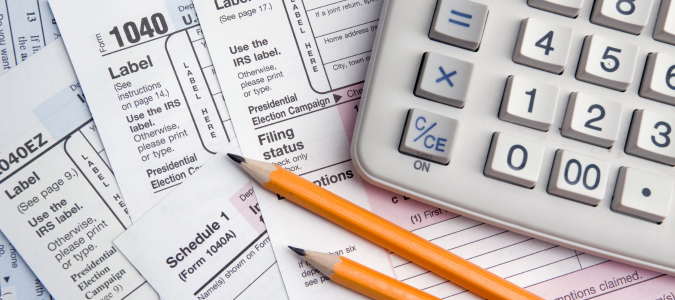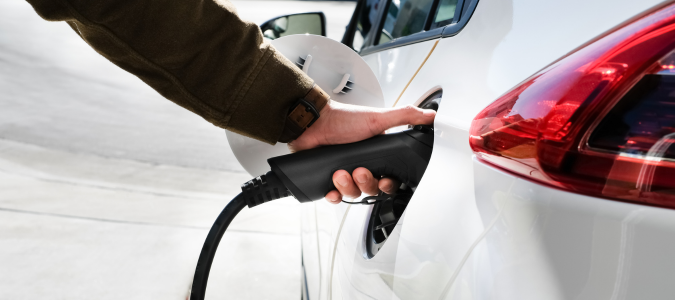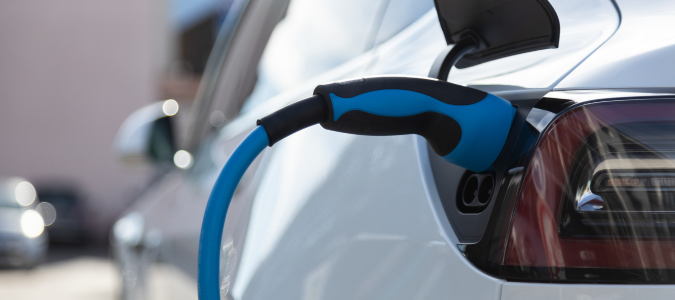Electric vehicles (EVs) are a great way to help fight climate change and reduce gas costs. Additionally, the U.S. federal government offers a tax credit for EV charging stations to help make switching to an electric vehicle more affordable.
Let’s go over a few things you should know about this EV incentive.
Tax Credit for EV Charger: What Is It?
The EV charger tax credit is a provision under the U.S. government’s Inflation Reduction Act. The federal government offers these incentives to help lower the cost of installing electric vehicle (EV) charging stations. Known as the 30C Tax Credit or EV Charging Tax Credit, this program provides up to $1,000 per charger for home installations. It covers 30% of the installation costs, including the charger, necessary parts, permits, hardware upgrades and the work of a licensed electrician.
Although this tax credit does not help pay for the electricity used to charge your EV, it can save you money on installation costs. Since installing an EV charger is a complex job, it’s essential to hire a licensed electrician to ensure the work is done correctly.
Key Considerations Before Installation
Here are a few things to consider before installing an EV charger:
- Location
- Type of charger
- Electricity capacity
Let’s dive into each of these in more detail.
Location
The location where you install the EV charging station in your home can significantly affect the charger’s efficiency. That is why involving a professional EV installer in your decision-making process is important. Choosing the right EV charging equipment is crucial to maximizing the benefits of available tax credits and rebates.
A good EV charging space should be big enough to accommodate cables up to 13 to 16 feet long. Additionally, the area should allow for easy parking from different directions.
Type of Charger
The correct charger for your EV depends on your home’s specific needs and environment. However, most EV owners use the level 2 charger.
If you are new to EVs, you’re probably wondering, “What is a level 2 EV charger?” A level 2 charger for EVs is a charging station that uses a 240-volt power source to provide faster charging than a standard household outlet, typically adding 10 to 60 miles of range per hour.
Electricity Capacity
What is the electricity needed for your EV? Do you need to install multiple EV charging stations? All of these questions have a direct effect on your home’s electrical system. It is best to contact a licensed electrician to conduct an inspection and offer effective solutions to prevent potential overloads. Additionally, you can claim a federal tax credit for a home EV charger by filing Form 8911 with the IRS during tax season.
What Is the Tax Form for Electric Car Charger?
To claim credits for installing an EV charger, you’ll need to complete Form 8911 or the “Alternative Fuel Vehicle Refueling Property Credit” on the IRS website.
The form includes specific requirements and credits you may be eligible for. As an individual, you can receive a $1,000 credit for each electric car charging station you install. If you install multiple chargers, you can receive more than $1,000 in credits.
However, you must use approved chargers and equipment to qualify for the incentive.
Here are other conditions you must satisfy to qualify for the credit:
- You must install the charging station within the tax year.
- The charger must be located at your residence in the U.S. or its territories.
- The station should be able to charge electric vehicles that can operate on public roads, including two- and three-wheeled vehicles.
Is My Area Included in the Tax Credit Plan?
To verify if your property is within the qualified area for the tax credit for an EV charger, follow these steps if your property became functional before Jan. 1, 2025:
- Locate your property using the 2020 Census Tract Identifier.
- Copy the 11-digit geographic identifier (GEOID) for your property.
- Search the 11-digit GEOID in Appendix A.
- If your GEOID is listed, your property qualifies.
- Your property is not eligible for the credit if it is not listed.
For properties that became functional after Jan. 1, 2025, these steps apply:
- Locate your property using the 2020 Census Tract Identifier.
- Copy the 11-digit geographic identifier (GEOID) for your property.
- Search the 11-digit GEOID in Appendix B.
- If your GEOID is listed, your property qualifies.
- Your property is not eligible for the credit if it is not listed.
After confirming your eligibility, here’s what to do next:
- Contact a licensed electrician to schedule the installation of your electric car charger.
- Keep a detailed record of your purchase and labor costs.
- Complete and file Form 8911 (December 2024 Revision).
- To claim the full available tax credit for your EV charger, file Form 8911 with your tax return.
How Do I File Form 8911?
Filling out Form 8911 is straightforward. Here’s a guide you can follow:
- Gather Your Documents: Ensure all necessary documents, including receipts and installation details, are ready.
- Fill Out Form 8911: Complete the required fields on the form. Fill in your name, taxpayer identification number (TIN), date of installation, the type of refueling property and any associated costs.
- Submit the Form: Submit the completed Form 8911 with your Form 1040 (individual tax return), submitting all receipts and supporting records. You can file electronically using tax software or the IRS Free File program. Alternatively, you can also mail the documents to the address on the form.
Is It OK to Charge an EV Every Day?
Keep in mind that how often you charge your EV can significantly affect its longevity. While EVs are designed to be charged regularly, how often you charge your vehicle can impact the lifespan of the battery.
Before you charge your EV every day, consider these factors first.
Do I Use My EV Often?
It is normal for your EV battery to drain quicker if it is in constant use. In this case, daily charging is necessary. But even when you have to charge daily, keep the battery level between 20% and 80%. This will help preserve the health and longevity of the battery.
What Is My Budget for Electricity?
If you own multiple charging stations, you may have already noticed the rising cost of electricity. Charging your EV constantly, regardless of the battery’s charge level, can quickly add up.
To save on energy costs, it is best to charge your EV only when necessary. You can limit charging to only when the battery is low, rather than on a daily basis.
This will help manage electricity costs and enhance your vehicle’s energy efficiency.
Type of Battery
Different EV models come with varying battery capacities and requirements, both of which can affect the best charging frequency and method to adopt. The manufacturer’s manual comes in handy here. However, if you find the contents too technical to interpret or figure out on your own, you can have the different EV charging levels explained to you by your electrician.
Wear and Tear
Frequent charging doesn’t just affect your EV’s battery; it can also take a toll on your charging equipment. Over time, both your battery and the charging station will experience wear and tear, which may reduce their lifespan.
To maximize the durability and performance of your equipment, keep in mind how often you charge and the condition of your charging setup.
Tips for Maintaining EV Battery Health
For optimal battery life and performance, consider the following tips:
- Drive smoothly: Avoid rapid acceleration or hard braking. A smooth, moderate driving style helps preserve battery health.
- Avoid bumpy roads: Rough terrain can stress the vehicle and battery. When possible, stick to well-maintained roads.
- Keep your vehicle cool: Parking in cool, shaded areas will help protect the battery from excessive heat, which can shorten its lifespan.
- Use a slow charger: Whenever possible, opt for slow charging. This is gentler on the battery compared to fast charging and can help prolong its lifespan.
- Don’t charge to 100% frequently: Charging your EV battery to full capacity too often can wear it out quicker. Keeping the charge level between 20% and 80% is better.
Get Pros to Help When Installing an EV Charger at Home
The installation, use and maintenance of EV chargers can get quite technical, so you should have a licensed electrician as your guide to EV charging at home. This professional can walk you through the details and provide a suitable EV charger installation.
ABC Can Install a Home EV Charger
Can you imagine never having to pump gas again? By having an electric vehicle and an in-home EV charger, you can enjoy all EVs’ benefits. ABC’s licensed electricians can help you decide on the best EV charger for your home and handle the EV charger installation so you can get on the road.



